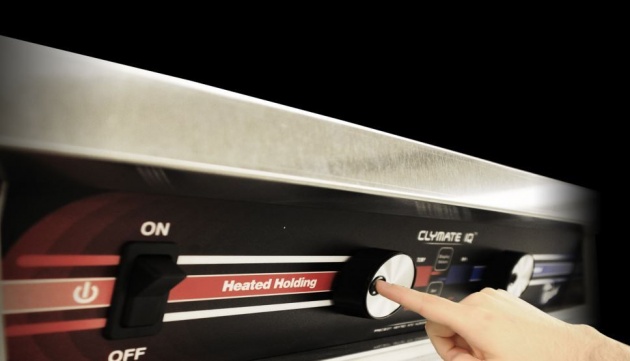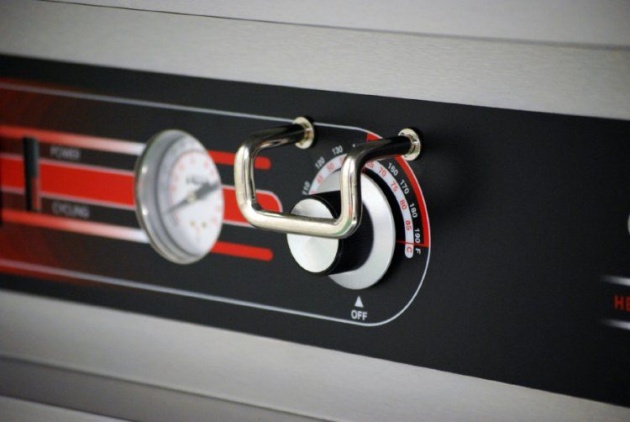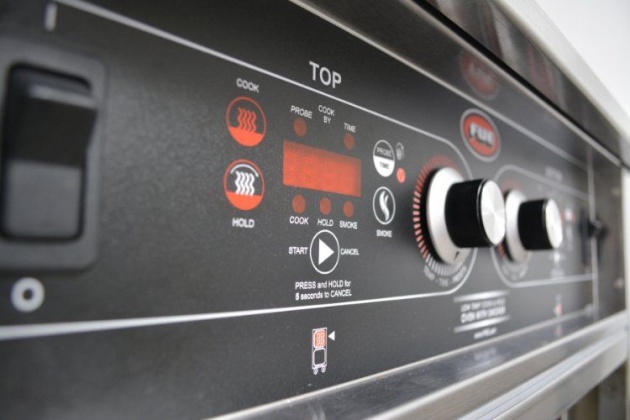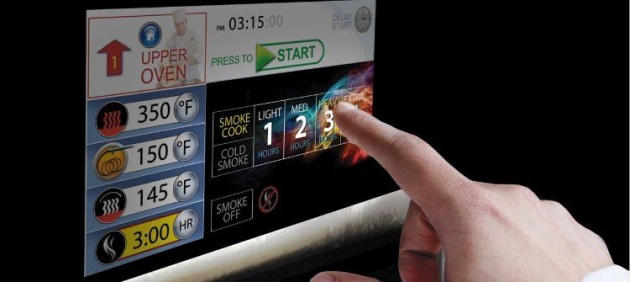Foodservice Equipment – Controls

It’s not just about nobs and switches these days, even though some people would prefer it that way. Foodservice equipment manufacturers have brought us some pretty out of this world technology, such as dazzling touch screens that can control every aspect of a cook cycle while utilizing Wi-Fi to report live HACCP data to a headquarters for review. But who needs all of these bells and whistles, what happened to just applying temperature to food? Well depending on your operation, and the size of your company / franchise, eliminating even the smallest step from an employee or Critical Control Point can save millions of dollars at year end.
Mechanical Controls

The good old analog control of yesteryear. These controls are most commonly preferred by independent establishments that are happy to save on equipment cost wherever possible. These controls are if nothing else, very reliable and rugged. They can take a beating, and the proof can be found in every used equipment dealer across the nation. Mechanical thermostats are bulb and capillary, making them incredibly easy to calibrate, most of the time a simple screwdriver will get the job done.
You probably have come across a diel or two that have nonspecific settings such as 1-10 or Low-High. More often than not, temperature or even perhaps moisture is being controlled by what is called an infinite switch. These controls send power to the heating elements and components determined by a ratio such as 1 minute on 3 minutes off. As you adjust to a higher setting the ratio will change allowing for more time on, and less time off. If you do a specific job, such as proofing at the same setting day in and day out, this control can work wonderfully. Most manufactures have guides, or even on call chefs, to assist with settings for common products.
Digital Controls

It’s becoming difficult to even purchase a control these days that aren’t digital. As technology is ever advancing and electronic components are becoming more and more affordable, manufactures are all moving into the digital era. These controls bring with them high precision and quick reaction. By reaction, we are referring to the time or lag it takes for the controls sensor to read the internal temperature of the cabinet. This lag or delay it takes to react can generate temperature swings as much as 20°F above and below the set point as the cabinet cycles on and off. It’s no wonder why the majority of energy star qualified equipment sport digital controls.
Digital controls offer a wider range of customization and options to the operator than mechanical controls do. These controls can have locks, preset menus, adjustable programs to automatically change temperatures during a cook cycle, or even add temperature probes that track and cook food perfectly without the need of a chef. With this next level safety and programming, cook and hold ovens can cook over night without worry. Manufactures of foodservice equipment are now working directly with customers such as restaurant chains executive chefs to develop controls that cook specific products perfectly every time with limited user skill sets. These large applications leverage the small upfront investment of a digital control to save large money on payroll and training.
Touch Screens

To infinity and beyond! Almost all of the largest foodservice equipment managers offer a touch screen control in one fashion or another. These controls have the most flexibility to customize, if you need something that is not off the shelf, you might need an advanced control such as a touch screen. Because the information is driven from a screen much like the one on your tablet or phone, the amount of information that can be stored or shown is almost limitless. Manufactures are starting to team up with companies that specialize in software that protects profits by centralizing control, analysis, and management of energy-consuming equipment, driving energy costs down and enhancing equipment maintenance.
Large foodservice operations such as casinos, schools, and hospitals can monitor HACCP live from tablets or phones. Foodservice directors can be offsite and receive push notification warnings about temperature sensitive food reaching the temperature danger range. They can even make adjustments to the programming while at a headquarters on the opposite side of the country, or be warned if there is a power failure during a thunder storm.
Controls are a commonly overlooked item on a spec sheet or order form, but depending on your operation, whether it is a food truck that only wants reliability and a cabinet that gets hot, to the director of operations that is overseeing the equipment usage and condition of 500+ locations across the country, they deserve a second thought.



